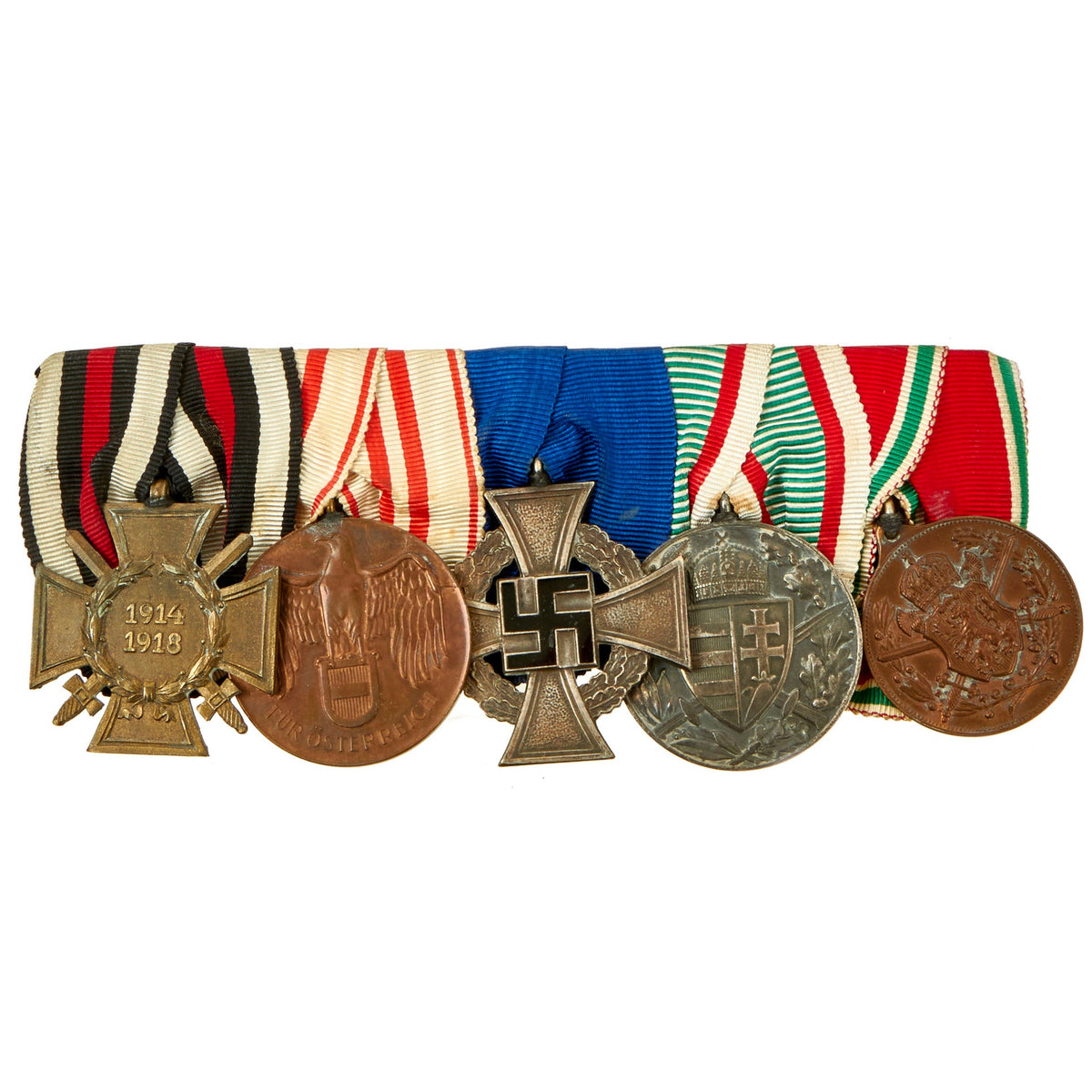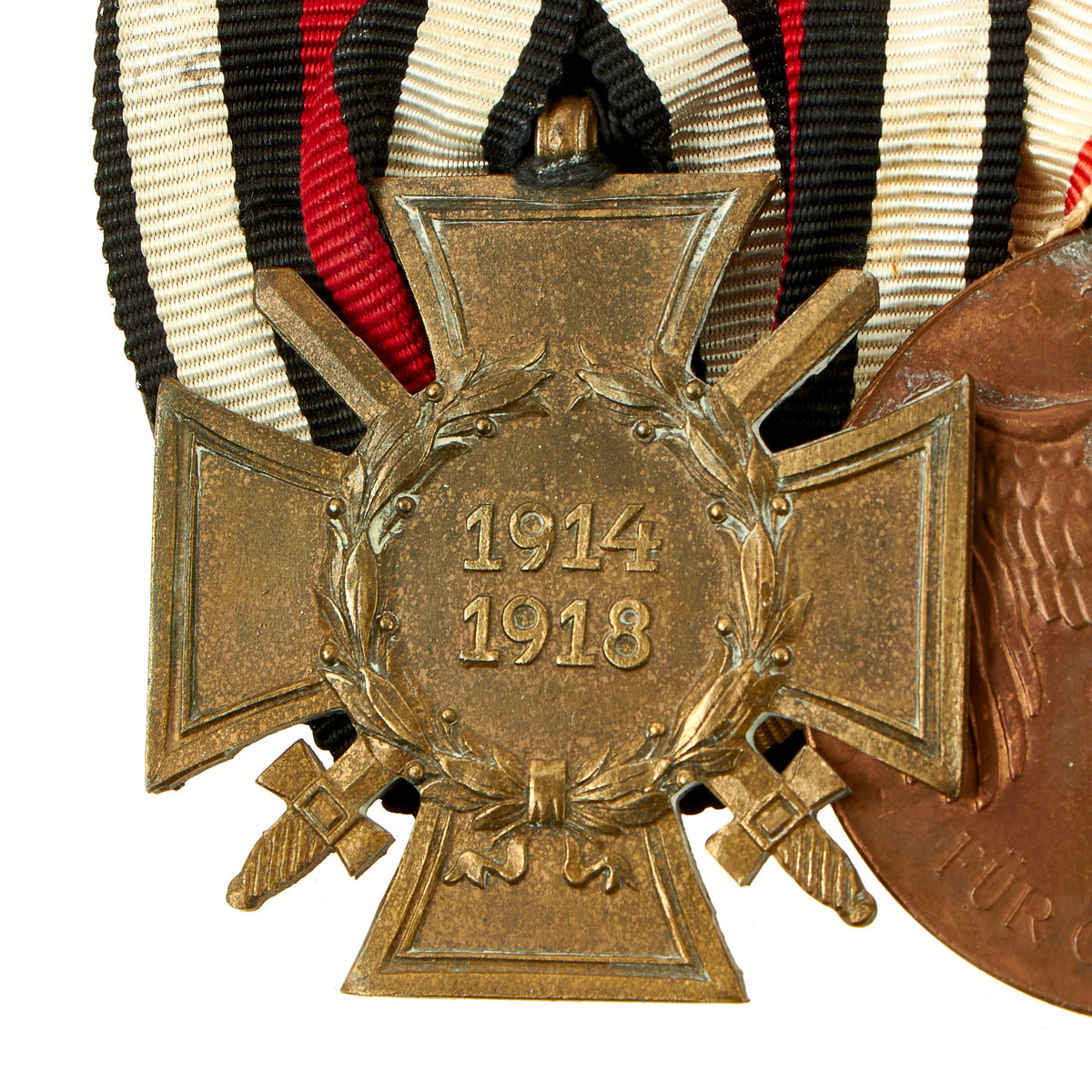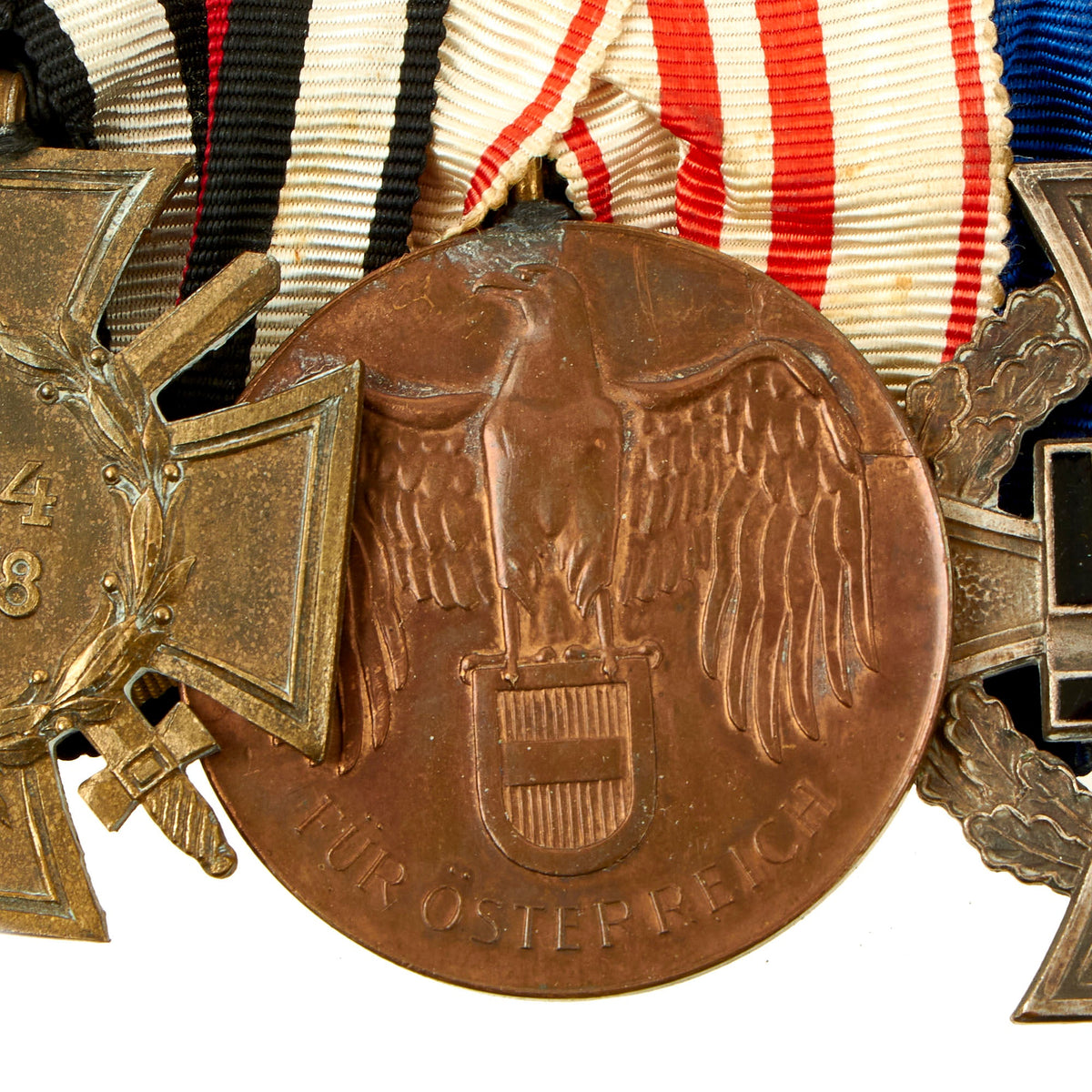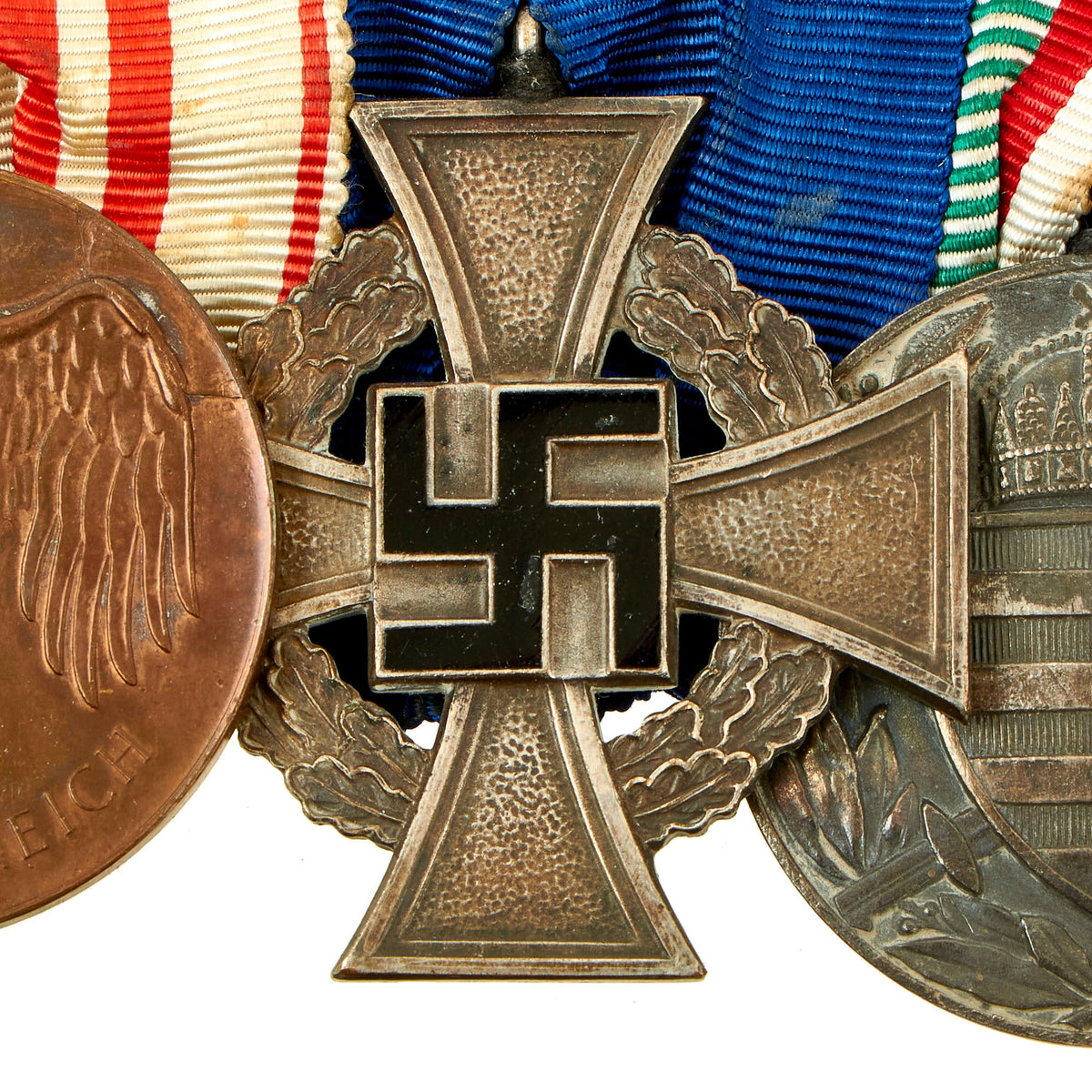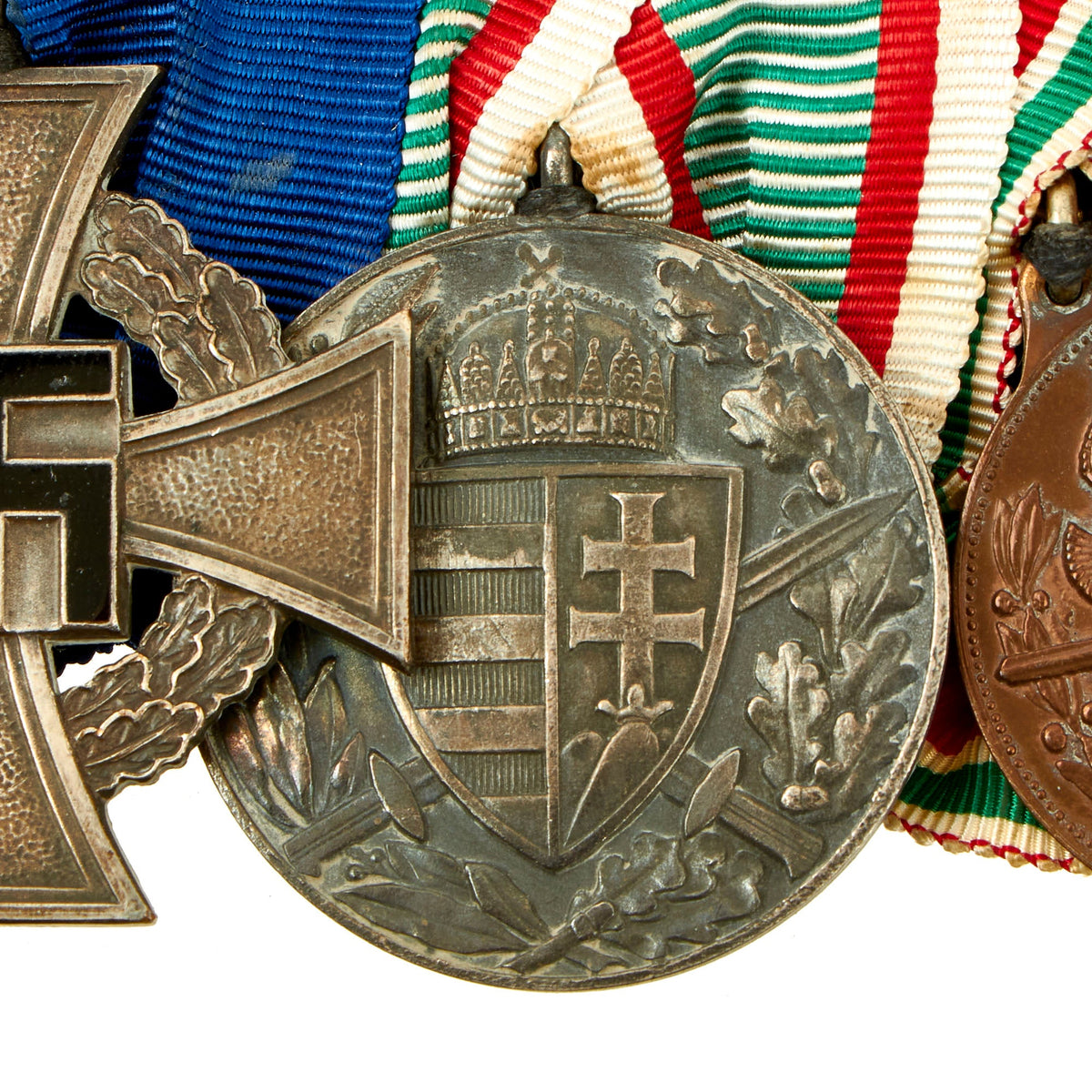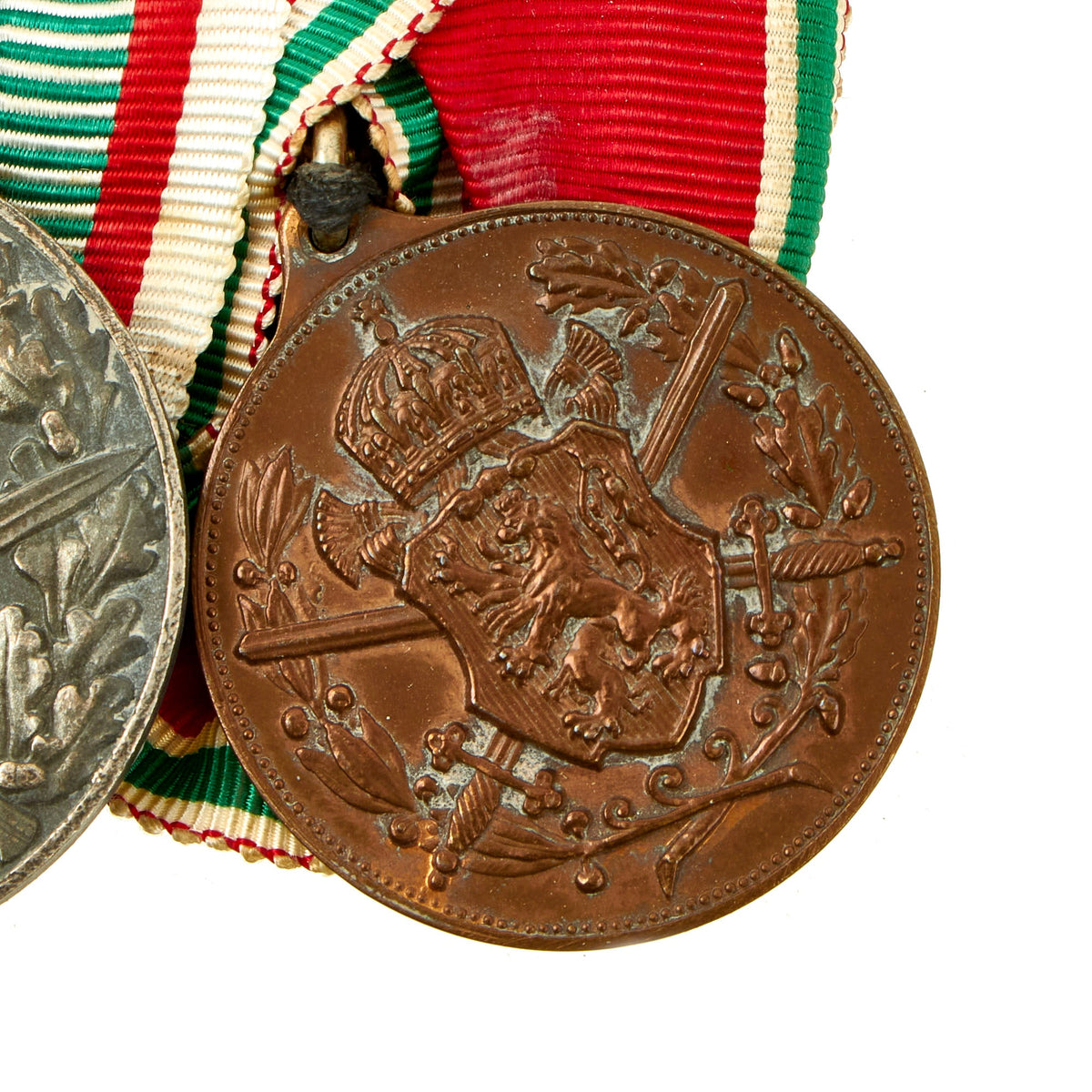Original German WWI & WWII Era Medal Bar with Hindenburg Cross with Swords & Long Civil Service Award – 5 Medals Original Items
$ 150,00 $ 60,00
Original Item: One-of-a-kind. This is a very nice genuine medal bar, owned by a German soldier who fought during WWI, and later saw service in the Civil Sector during the WWII NSDAP period. The ribbons are still in great shape, showing very little fading, and overall the the set is quite eye catching.
The set of 5 medals offered in good condition is mounted on a metal backing board with pin and lined in green wool felt. It consists of the following medals:
– German WWI Honor Cross of the World War 1914/1918 (Hindenburg Cross) Medal with Swords (for combat)
– Austrian War Commemorative Medal (without Swords) for Non-Combat Service
– German WWII Faithful Service Decoration 2nd Class Cross for 25 Years of Service
– Austro-Hungarian WWI Pro Deo et Patria Military Medal 1914-1918 for Combatants
– WWI Hungarian/Bulgarian European War Commemorative Medal 1915-1918 for Combatants
Below is an explanation of each medal in detail:
Hindenburg Cross with Crossed Swords (for combat):
The Honor Cross of the World War 1914/1918 (German: Das Ehrenkreuz des Weltkriegs 1914/1918), commonly, but incorrectly, known as the Hindenburg Cross was established by Field Marshal Paul von Hindenburg, President of the German Republic, by an order dated 13 July 1934, to commemorate the distinguished deeds of the German people during the First World War. This was Germany’s first official service medal for soldiers of Imperial Germany who had taken part in the war, and where they had since died it was also awarded to their surviving next-of-kin. Shortly after its issuance, the government of NSDAP Germany declared the award as the only official service decoration of the First World War and further forbid the continued wearing of German Free Corps awards on any military or paramilitary uniform of a state or NSDAP Party organization.
This example is marked on the back with PM, for Paul Meybauer of Berlin.
Austrian War Commemorative Medal
The War Commemorative Medal (German: Kriegserinnerungsmedaille) was a commemorative medal established in 1933 by the First Republic of Austria. The medal was awarded to Austria’s participants in World War I. The medallion of the medal is round, 33 mm (1.3 in) wide, and made of Tombac. The front face of the medal depicts a right facing eagle surmounting the escutcheon with fess depicting the simplified arms of Austria. Below the eagle is the inscription FÜR ÖSTERREICH (For Austria). The reverse of the medal bears the inscription 1914-1918 surrounded by a wreath of oak leaves around the edge.
The medal is suspended from the correct white with two central red stripes and thin red stripes at the edges as well. Combatants could wear crossed gilt swords on the ribbon, such as on this example.
– WWII 2nd Class 25 Year Civil Service Faithful Service Medal: The Civil Service Faithful Service Medal (Treudienst-Ehrenzeichen für Beamte Angestellte und Arbeiter im öffentlichen Dienst) was a NSDAP Germany medal of honor that was founded on 30 January 1938, in two grades, to reward civilians and military in the employ of the German public services for long and faithful service.
All officials, employees, and laborers at any level of the public service (local, regional or national) who complete 25 or 40 years service were eligible. The second class award was for 25 years of service was a silver cross, with a silver wreath and a black enameled swas in the center of the cross. The first class award was for 40 years of service was a gold cross, with a gold wreath and a black enameled swas in the center of the cross.
The reverse of both classes was stamped with Für treue Dienste (For faithful Services). in German black letter typeface. The ribbon for the medal is cornflower blue.
Austro- Hungarian WWI Pro Deo et Patria Military Medal 1914-1918
Hungary (Austro-hungarian Empire): Hungarian WWI Commemorative Combatant’s military medal PRO DEO ET PATRIA (for God and Country). Award for the participation in the Great War. The medal was instituted in 1929. It is mounted on the correct red white and green ribbon, though the green has faded almost completely to yellow. It has the crossed swords on the ribbon, indicating it was awarded to a Combatant in the war.
Hungarian/Bulgarian European War Commemorative Medal 1915-1918:
The Bulgarian European War Commemorative Medal was instituted in 1933, and was available to all WWI veterans including military personnel, non-combatants like medical personnel and civilian officials and next-of-kin. Allied veterans were eligible. The ribbon on this example indicates it was awarded to a combatant. Non-combatant ribbons were the same except with a white stripe down the middle, and next-of-kin medal ribbons had a black mourning stripe in the center.
The medal was awarded until December 31, 1939. About 249,000 medals were issued (about 50,000 to Bulgarians and about 199,000 to allied forces) in three classes.
Fast Shipping with Professional Packaging
Thanks to our longstanding association with UPS FedEx DHL, and other major international carriers, we are able to provide a range of shipping options. Our warehouse staff is expertly trained and will wrap your products according to our exact and precise specifications. Prior to shipping, your goods will be thoroughly examined and securely secured. We ship to thousands clients each day across multiple countries. This shows how we're dedicated to be the largest retailer on the internet. Warehouses and distribution centres can be located throughout Europe as well as the USA.
Note: Orders with more than one item will be assigned a processing date depending on the item.
Before shipping before shipping, we'll conduct a thorough inspection of the items you have ordered. Today, the majority of orders will be delivered within 48 hours. The delivery time will be between 3-7 days.
Returns
The stock is dynamic and we cannot completely manage it because multiple stakeholders are involved, including our factory and warehouse. So the actual stock may alter at any time. It's possible that you may not receive your order once the order has been made.
Our policy is valid for a period of 30 days. If you don't receive the product within 30 days, we are not able to issue a refund or an exchange.
You can only return an item if it is unused and in the same state as the day you received it. You must have the item in its original packaging.
Related products
Uncategorized
Uncategorized
Uncategorized
Uncategorized
Uncategorized
Armoured Fighting Vehicles of the World: AFVs of World War One (Hardcover Book) New Made Items
Uncategorized
Uncategorized
Uncategorized
Uncategorized
Uncategorized
Uncategorized
Uncategorized
Uncategorized
Uncategorized
Uncategorized
Uncategorized
Uncategorized
